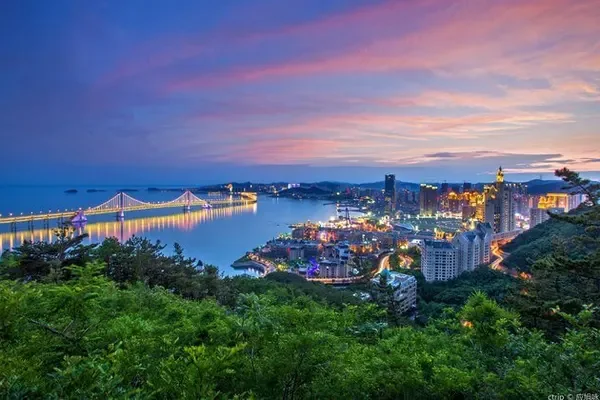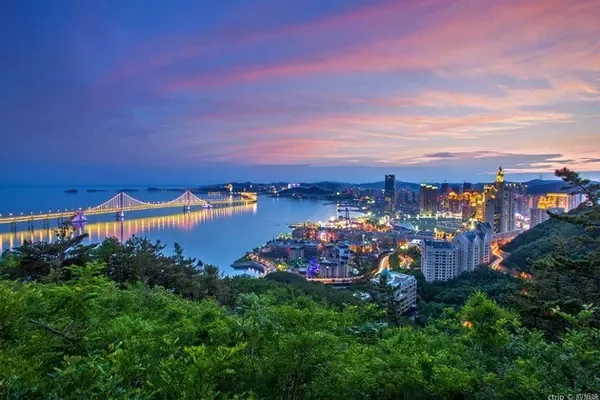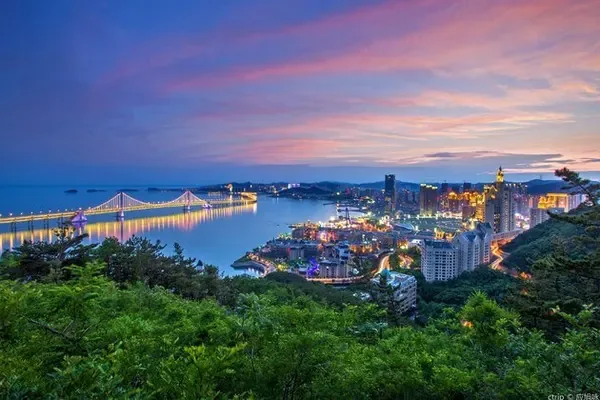Beijing is the place I most yearned to go to when I was a child. It has always been my dream to go to Tiananmen Square to watch the national flag being raised, and the old wolf playing the guitar and singing at the party at Peking University on TV is still deeply rooted in my heart. I went there in 2003 To apply for a visa to go abroad, I deliberately stayed for a few more days. At that time, a digital camera was just available, and a rich friend generously lent it to me. At that time, the house had just been sold, and I had a lot of cash in my hand. To be honest, I have been in Shanghai after graduation. I was more frugal and never went on a trip. It was the first time I went on a long trip alone. Looking back on that trip alone, it was really cool. I used to be reluctant to buy food and buy it when I had money in my pocket. Haha, go climbing After visiting the Great Wall and visiting the Ming Tombs, a man is not a hero if he doesn’t see the Great Wall. Climbing up to the hero’s slope in one go is not as difficult as expected, maybe he was young and physically strong at that time. At that time, I specially set the alarm clock to watch the national flag raising, because a friend called me in the middle of the night (worried about my safety alone) and then I overslept and didn’t see the national flag raising. I have a little regret. At that time, my younger brother’s classmate was studying in Tsinghua University, so I went to live in the female dormitory of Tsinghua University, and also went to the campus of Peking University, so that every time I went to a city, I would go to the local famous school to check in. Hey, the dream of studying in a famous school can’t be realized, but it’s still possible to check in in a famous school. Achieved ----
During the two years abroad, I met my friends in Beijing and spent a happy life of eating, drinking and playing together. At that time, she was very beautiful and romantic. We were two extremes. Later, she stayed there for many years. She will not come back. I want to go to see her and go to Tiananmen Square to raise the national flag, and to see Beijing 10 years later (I always find a specific commemorative number for myself to fly myself), so I arranged the 6th in November 2013 Beijing Tour (2013.11.13-18)
Nanluoguxiang--Houhai--Fragrant Hills--Peking University--Forbidden City--National Museum of China--Tiananmen Square--Monument to Heroes
A ray of sunshine in the morning on the train started the trip to the imperial capital

Nanluoguxiang: An ancient block with a history of more than 740 years, it is the only traditional residential area in my country that completely preserves the courtyard texture of the Hutong in the Yuan Dynasty, the largest scale, the highest grade, and the richest resources. It is also the street with the most old Beijing style. lane.




A courtyard house in Fuxiang Hutong looks old, and the Chinese cabbage in front of the door is eye-catching



Houhai Bar Street: It is composed of small alleys near the water. It feels relatively small and will not be too noisy.
I chose a family and ordered two glasses, and quietly listened to the live performance







Jianxinzhai: It was built in the Jiajing period of the Ming Dynasty (1522) and rebuilt in the Jiaqing period of the Qing Dynasty (1796). Legend has it that it was once the place where the emperor trained his loyal subjects

Xiangshan Park: It is a royal garden with mountain forest characteristics. When I mentioned Xiangshan, I wanted to see red leaves. The last time I went there was not in autumn, so I didn’t see it. This time my friend asked me where I wanted to go, so I thought about red leaves. I remember that when I was studying, a classmate gave me a model of red leaves for me to put in the book, so I really wanted to see the autumn scenery with the characteristics of late autumn: red leaves all over the sky, but I only saw a handful of them from a distance.

Glass Pagoda: It is a part of the temple on the west mountainside of Zongjing Dazhao Temple in Xiangshan Park. Built in the forty-fifth year of Qianlong in the Qing Dynasty (1780), it is about 30 meters high and has seven levels of octagonal dense eaves. On the top of the tower is a yellow glazed vase and eight eaves. The bottom of the tower is supported by an umbrella cover opened on eight sides, and is decorated with white marble railings around it. The lowest layer is a stone octagonal tower base, with copper bells on the eaves of each layer.


is played by real people


In order to save time, go up the mountain by cable car, and go down the mountain slowly by yourself


Department of wish cards, pray!






fat stray cat





The beautiful and poetic Peking University


















Carved Time Cafe


Tiananmen: The main gate of the Beijing imperial city in the Ming and Qing dynasties. It was first built in the 15th year of Yongle (1417) in the Ming Dynasty. It was originally named "Chengtianmen", which means "accepting luck from the sky and receiving orders from heaven". The designer is Kuai Xiang, an imperial architect of the Ming Dynasty. In the eighth year of Shunzhi in the Qing Dynasty (1651), it was renamed Tiananmen Square. It is composed of two parts: the city platform and the city tower. There is a Xumizuo made of white marble, with a total height of 34.7 meters. The Tiananmen Gate Tower is 66 meters long and 37 meters wide. There are five coupon gates under the city platform. The coupon gate in the middle is the largest and is located on the central axis of the Beijing Imperial City. In the past, only the emperor could enter and exit through it. A portrait of Mao Zedong hangs above the central doorway, and on both sides are large slogans "Long live the People's Republic of China" and "Long live the great unity of the people of the world".

Jinshui Bridge is divided into inner and outer Jinshui Bridge, built in the Yongle period of Ming Dynasty. The Inner Jinshui Bridge is located on the Jinshui River in the square in front of the Taihe Gate in the Forbidden City. It is composed of five parallel single-hole arched white marble bridges; In the twenty-ninth year of Kangxi in the Qing Dynasty (1690). The bridge deck is slightly arched, and the bridge body is like a rainbow, forming a beautiful curve. The most prominent bridge deck in the middle is carved with dragon stigmas. Only the emperor can pass through it, which is called "Yulu Bridge"; On the bridge deck, only princes are allowed to pass, which is called "wanggong bridge"; on the two sides, only civil and military ministers of third rank and above are allowed to pass, called "grade bridge"; The way the soldiers walk is called "Gongsheng Bridge". In addition to the similar strict grade regulations, the five inner Jinshui bridges also express the meaning of "all directions come to the DPRK"

Huabiao The two pairs of Huabiao erected during the construction of Chengtian Gate during the Yongle period cleverly embellished the entire exquisite Forbidden City complex and enhanced the overall sense of ancient architectural art. Huabiao is an important symbol of Tiananmen Square. It is integrated with the majestic Tiananmen Gate Tower, the graceful and elegant Jinshui Bridge, and the mighty and majestic stone lions. It has become a unique beautiful landscape in front of Tiananmen Square. The squatting beast on the top of the Huabiao in front of Tiananmen Square is called "Ju", looking outside the palace, people call it "Wang Tianjiu" and "Wang Jungui". Behind the Tiananmen Gate Tower, there are two similar Chinese watches, with a stone squatting on the top. The stone on the Huabiao faces north, towards the direction of the imperial palace. People call it "Wang Jun Chu". "Looking out for the king" advised the emperor not to stay in the palace all the time, but to go to the people to see the suffering of the people.



Eating candied haws in front of the Forbidden City



National Museum of China: It is a comprehensive museum that pays equal attention to history and art and integrates collection, exhibition, research, archaeology, public education and cultural exchange.





Temple of Heaven model















That night we wandered around the Capital Gymnasium to see if we could find cheap tickets to watch Li Zongsheng’s concert. The scalpers said that you don’t go to anyone’s concert, they are all middle-aged men who drive luxury cars, but yes, Li Zongsheng's generation of fans is now the backbone of financial resources.

Raising the national flag at Tiananmen Square: The final highlight, in order not to leave any regrets, I got up early at 4 o’clock and took a taxi to go. However, the place where the flag was raised was already full of people, so I had to occupy a seat in a corner.









Look carefully, there is a person inside


Monument to the People's Heroes (Monument to the People's Heroes): 37.94 meters high, the front (north) center of the monument is a whole piece of granite, 14.7 meters long, 2.9 meters wide, 1 meter thick, and 60.23 tons in weight, engraved with Comrade Mao Zedong's 1955 Inscribed on June 9th are the eight gold leaf characters of "The People's Heroes Are Immortal". The heart of the stele on the back is composed of 7 stones, and the content is a 150-character lowercase inscription drafted by Mao Zedong and written by Zhou Enlai.



In 2003, I went alone to the Forbidden City, the Summer Palace, the Great Wall, and the Ming Tombs. I still have the impression of that trip in my mind: the roads are empty, the vegetables are few but expensive, the meals are large, and the driver drives very hard. In 2013, I saw Fragrant Hills without red leaves, but I saw red leaves on the campus of Peking University. In addition, I also watched the national flag raising in Tiananmen Square. I lived in the compound of the National Meteorological Administration of a friend and experienced the daily life of the local people.
A person's life is a long series of life experiences --- after the struggle is over, an important turning point will begin, and a new glorious journey will begin. Live well, and there is hope in living well --- "Live Well"
when they go low , we go high ! ---Michelle Obama
Next stop Tianjin



